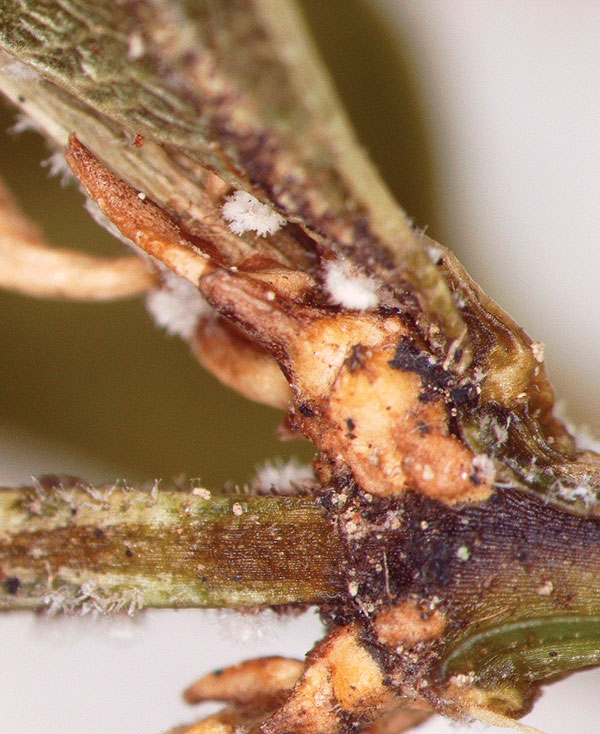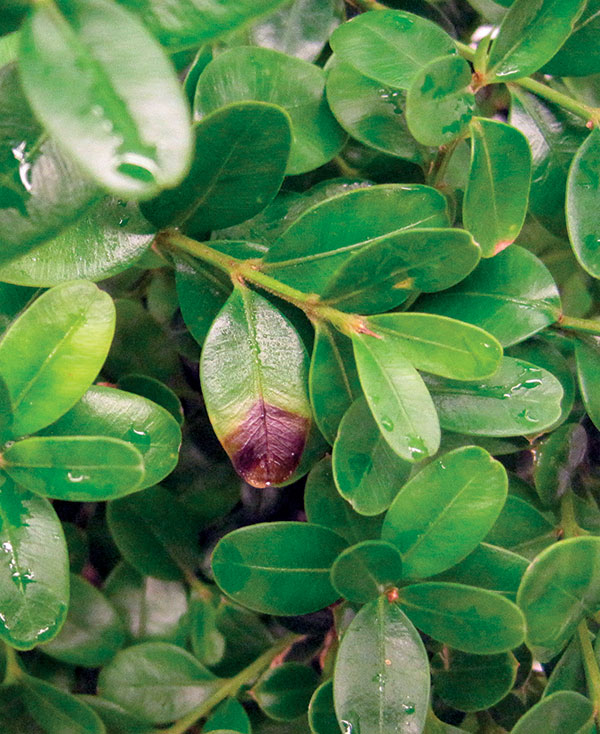
Since the first confirmed case in the United States about a year ago, boxwood blight (caused by Cylindrocladium pseudonaviculatum) has spread to 10 states and two Canadian provinces. All of the commercial boxwoods (Buxus spp. and cvs., USDA Hardiness Zones 6–9) that researchers have tested are vulnerable, as well as other plants in the boxwood family, including pachysandra (Pachysandra spp. and cvs., Zones 4–9) and sweet box (Sarcococca spp. and cvs., Zones 6–9). Although this fungal disease doesn’t typically kill its host plant, it does have a serious impact on the plant’s appearance-often stripping the shrub of its leaves completely. Although the roots remain healthy, infected boxwood looks dead, thanks to its bare branches. With still no cure in sight, the home gardener’s best line of defense is prevention. As you’re buying boxwood this fall, be sure to carefully inspect each plant before making a purchase, and don’t ignore the disease’s early symptoms if you spot them in your garden.
Learn to identify the symptoms
Rain splash, overhead watering, and contaminated tools can all transmit boxwood blight to healthy shrubs. How quickly plants decline depends on weather conditions. Boxwood blight spreads most rapidly when conditions are warm, humid, and shady. After a stretch of rain, infected plants may develop symptoms after just a few days. But before plants turn completely brown and defoliate, there are a few early warning signs:
 Dark or light brown spots on leaves, often in a circular pattern. |
 Dark brown and black streaks or cankers on otherwise green branches, sometimes accompanied by white spores in humid conditions. |
Got “box blight”?
Discolored foliage and streaked stems are the first signs of boxwood blight. But boxwood shrubs with cold or drought damage, Volutella canker, or root rot also display similar symptoms. The only way to confirm if a plant has boxwood blight is to submit samples to a professional plant-disease diagnostic laboratory; almost every state has one. Branches, stems, and leaves damaged by the disease make the best samples. Double-bag three or four cuttings, each measuring 6 to 8 inches long, in sealable plastic bags, and ship them to the lab in a sturdy box. If your shrubs test positive, there is no treatment. Collect all boxwood debris from the ground, and either burn or bury the plants; never compost them. For the latest updates on boxwood blight, visit www.boxwoodblight.org.
Kelly Ivors is an associate professor and extension specialist in the Department of Plant Pathology at North Carolina State University.
From Fine Gardening issue #148, Healthy Garden, page 22

















Comments
You article here it is the very amazing you can seen the here all way of online bejeweled 3 game join it and getting the update of batter score forever to seen puzzle so thanks for the information.
Log in or create an account to post a comment.
Sign up Log in